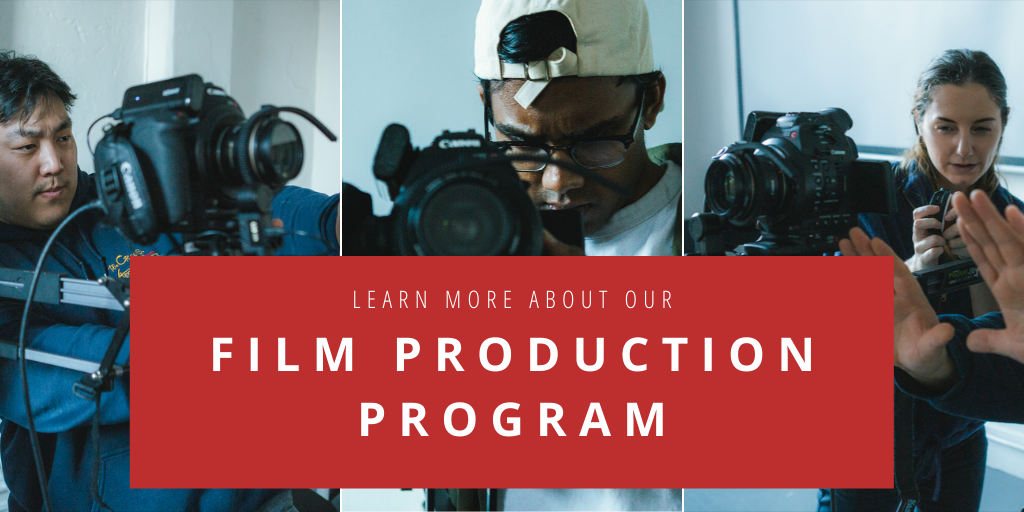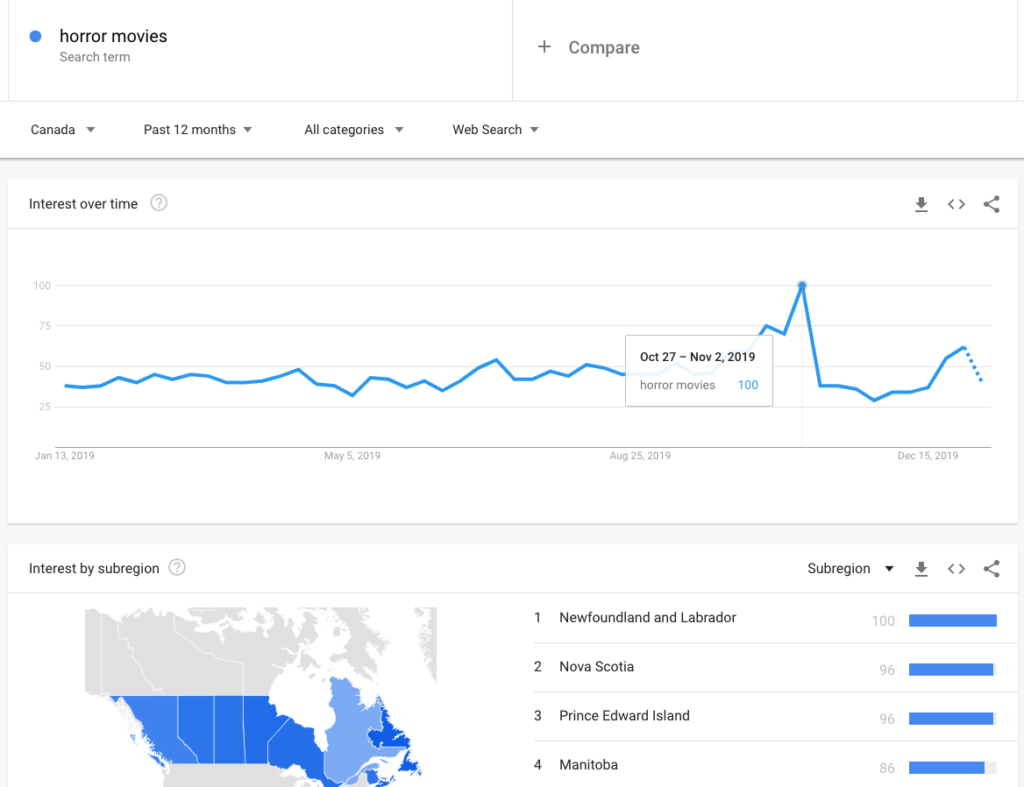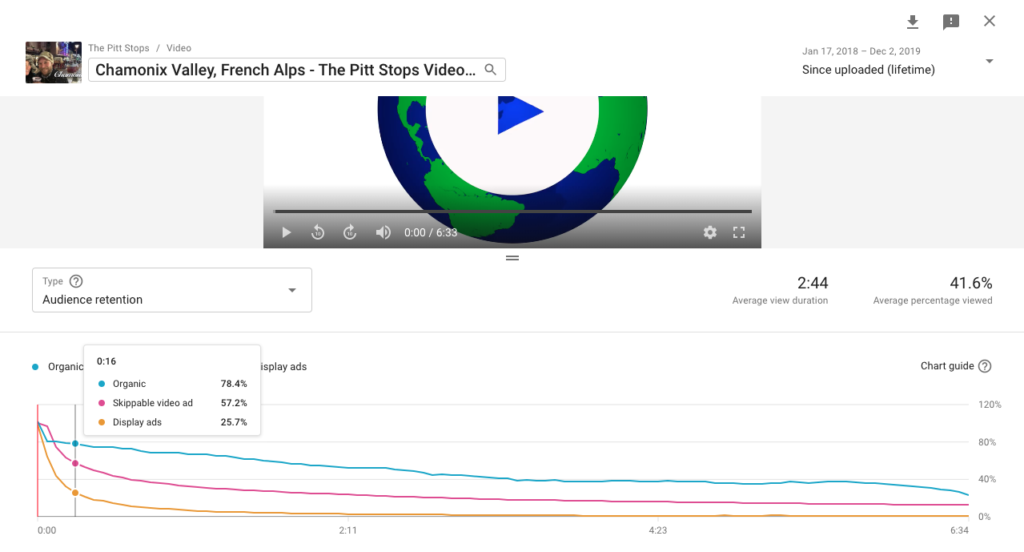How to Make Your Short Film Go Viral

Written by Breanne Pitt
There is no way to guarantee a video will go viral. You may spend hours on end editing, filming, and researching every blog or article about creating viral videos to no avail. Even though we can’t break the YouTube algorithm mystery, there are still several ways to groom your short film for viral infamy. When the YouTube algorithm strikes, your video should be prepared to capitalize on the opportunity. By following these simple techniques, you can optimize your short film’s chance of going viral.

Click here to learn more about InFocus Film School’s Writing for Film and Television Program!
1) WHAT’S TRENDING?
One way to appease the YouTube algorithm is to create a film based on a genre or topic that is trending. Go online and research what types of short films are going viral at the moment. Are horror films spiking, or are dystopian themed films popular because of the recent release of The Hunger Games? What is trending in the news? Do your research and pick a genre or topic that has a following. A great source to identify trending topics is Google Trends: https://trends.google.com/

As you can see in the above image, the search for horror movies spiked near the end of October. Also attached are the top four provinces who searched for horror movies at that time. This is valuable information because if you have a horror movie, you can consider sending Facebook advertisements to those regions around that time.
2) OPTIMIZATION AND AUDIENCE RETENTION
Even the most amazing videos can flop on the YouTube stage if not optimized correctly. To start, videos that have higher audience retention rates are more likely to ping the elusive YouTube algorithm.
YouTube wants people to binge-watch on its platform. The longer a viewer stays on YouTube, the more money YouTube makes. Therefore, YouTube needs to supply viewers with the content they enjoy to keep them hooked.
If your audience only watches the first 30 seconds of your video and then gets bored and clicks elsewhere, it is not likely your film will go viral. Therefore, you want to keep your viewer engaged throughout your film. To do this, be precise and concise in your editing, and trim unnecessary clips. Also, get a second opinion prior to uploading and ask peers to critique your work. These suggestions will not only help you win over the viral algorithm, but it’s also good practice for filmmaking.
3) YOUTUBE ANALYTICS AND AUDIENCE AWARENESS
Another great way to improve audience retention rates is to study your YouTube video analytics. YouTube Analytics enables the creator an inside look into their audience’s reaction to different moments in their film. Being able to reflect on your own work is the key to making better future videos, and analytics helps you both learn about your audience, and about your strengths and weaknesses as a filmmaker.

For example, YouTube analytics can pinpoint the exact time viewers are clicking out of your video. If viewers are consistently clicking out during dialogue, you either need to improve your writing, or utilize less dialogue in your films because your viewers may prefer more physical action. If viewers are clicking out at the beginning of your film, you probably need a more engaging hook. Whatever it is, analytics is a great tool for improving your work.
4) HOOK VIEWERS IN THE FIRST FEW SECONDS
You will hear all sorts of numbers. Grab viewers in the first 3 seconds! Hook your audience in 5 seconds or less! A YouTube “view” is 30 seconds of watch time! Whatever statistic you choose to subscribe to, the message is the same. Grab a viewer’s attention instantly. As stated above, viewer retention rates are important. If you do not create an engaging hook, you risk lower viewer retention time, and this is not favorable for the YouTube algorithm.
The average youtube channel gets an audience retention rate of 35% to 40%. The majority of viewers leave a video in the first few seconds. Often times, your video may be automatically played after another based on the YouTube algorithm. That means the viewer did not choose to watch your video, but instead, YouTube selected it for them. Therefore, you only have a few seconds to convince a viewer your video is worth watching. How? Have an engaging hook by using comedy, shock, a punchline, action, etc. Maybe you want to stun the viewer with your masterful use of cinematography, or maybe you want to tease a big reveal later in the video? It all depends on your video content, your strengths as a filmmaker, and your audience. Whatever you choose to do for your intro, check your video analytics and learn from them. What was either effective or ineffective in other videos you created?
5) WHEN TO POST
When a video is posted can either make or break your chances of going viral. Studies suggest that a large majority of people watch videos when they are at work and that there is a lull in YouTube views on weekends. Therefore, when starting out, try posting your videos on Monday or Tuesday, giving your video the entire work week to be viewed. This does not work for everyone, however. Knowing your audience is the most important rule of thumb here. If your audience is not the “office” type, maybe Mondays and Tuesdays are not a good option. Look at your YouTube Analytics to see where the majority of your audience is located too because time differences factor in as well.
6) DON’T JUDGE BOOKS BY COVERS, BUT JUDGE VIDEOS BY THUMBNAILS
Thumbnails are hugely important in preparing your video for its viral run. Viewers won’t be likely to click on your video if you have a boring, blurry or distorted thumbnail. There are several important guidelines to follow when creating a YouTube thumbnail. First, don’t use the automatically generated one. Instead, create your own. According to YouTube, 90% of its best-performing videos have custom thumbnails. When customizing a thumbnail, utilize good design. Apply the techniques like the “rule of thirds” to create fun and dynamic images. Contrast is also important. Keep in mind that people will be viewing your video thumbnails on mobile devices, and therefore some may be very small. Applying appropriate contrast to your images will help make thumbnails more vibrant and clear. Also, the many successful YouTube images utilize text. Make sure the text is relevant to your video and appropriate in font, color, and size. As said before, video thumbnails appear on multiple platforms and mediums, and 12 point font will not show up well on a mobile phone thumbnail. Lastly, optimal youtube thumbnails are 1280 pixels wide by 720 pixels tall, or a ratio of 16:9. Check out this video for examples on how to create great YouTube thumbnails.

7) GET SOCIAL, BE SHAMELESS
The more places your video exists on the web, the better. Link it to Facebook, Instagram, Twitter, Reddit, Pinterest, etc. Make sure you notify everyone who would be interested in your video in the social post, whether that be through hashtagging, messaging, tagging, etc. After you have linked the video to all of your social media channels, ask your friends to share the posts as well. Then go one step further. Email it to bloggers who have covered similar stories or other interested parties. Maybe, for example, you filmed a cool event at a venue. Send the video to the venue and let them know they have permission to share it on their channels. You are not alone. Don’t be afraid to reach out to others and capitalize on their networks along with your own.
8) THE WORD GAME
Do a keyword Search. A huge mistake most creators make is they try to be clever with titles, descriptions, tags, etc. It not about being a writer or a poet. Instead, you need to your homework when it comes to SEO. Search Engine Optimization is key when it comes to prepping your video for its viral debut. Use tools like Google Ads Keyword Planner, Keywords Everywhere, or Rank Tracker to see what is trending. Identify the words that you believe are most relevant to your video and test them out. Which ones are ranking the best with your target demographic? Which ones are oversaturated? Once you have your words, there are three places you should focus on using them: title, description, tags.

When writing a title, it is important to accurately describe your video. Don’t use clickbait. A viewer won’t stick around to watch a video that is not interesting to them. That will hurt your audience retention. Also, this can potentially violate YouTube’s Community Guidelines, which would result in the removal of your video. With your title, be engaging, clear, concise, and precise. Yes, you can be clever, but remain accurate. Ideally, keep titles to 60 characters or less with the most important information stated first. Also, check different mediums to see if your titles get cut-off in suggested videos, search results, and mobile devices.






